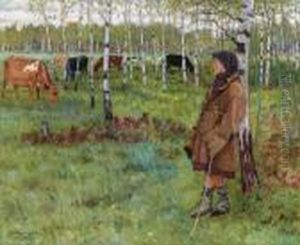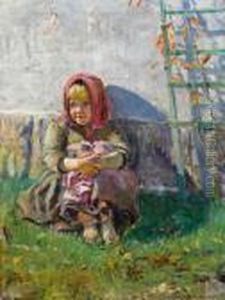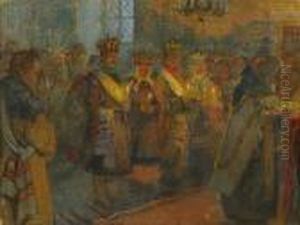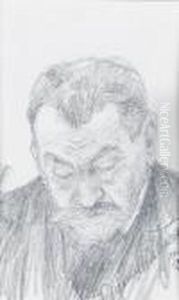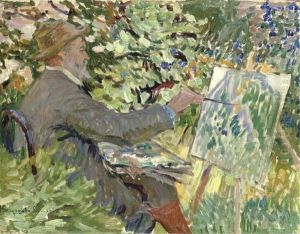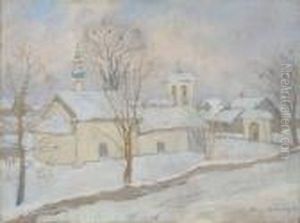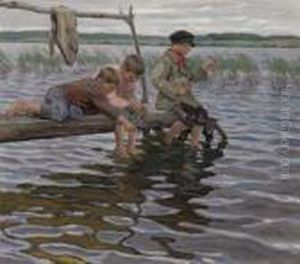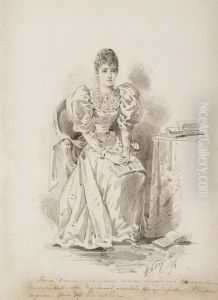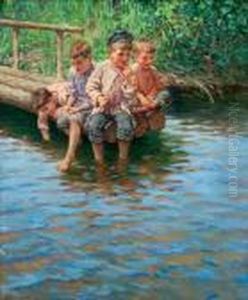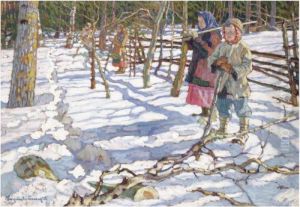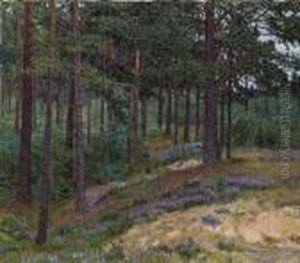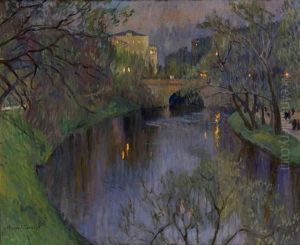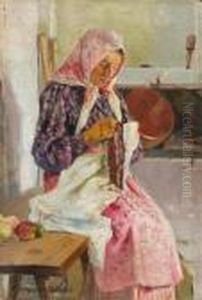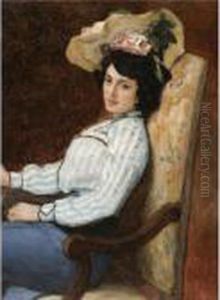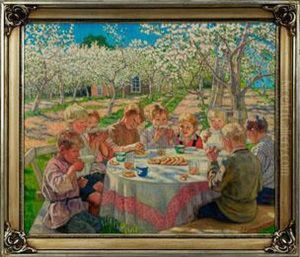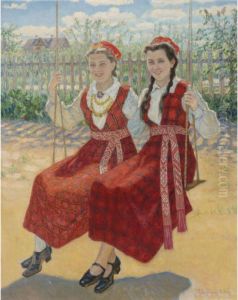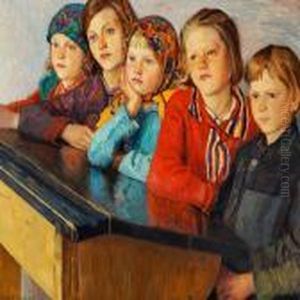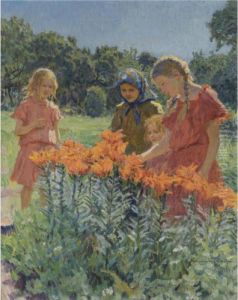Nikolai Petrovich Bogdanov-Belsky Paintings
Nikolai Petrovich Bogdanov-Belsky was a notable Russian painter born on December 8 (Old Style November 26), 1868, in the village of Shitiki in Smolensk Governorate of the Russian Empire (present-day Russia). He grew up in a peasant family, which provided him with a deep connection to the rural life that would later be reflected in his artworks. Despite the limitations of his upbringing, Bogdanov-Belsky showed an early talent for art, which was recognized and supported by local patrons.
In 1882, Bogdanov-Belsky left his village to study at the Semyon Rachinsky's school, a unique educational institution that offered opportunities to children from less privileged backgrounds. His artistic skills continued to flourish, and by 1883, he attended the Moscow School of Painting, Sculpture, and Architecture. There, he studied with the Russian realist painters Vasily Perov and Aleksey Savrasov, both of whom had a profound influence on his style.
Bogdanov-Belsky's artistic career progressed, leading him to the Imperial Academy of Arts in Saint Petersburg in 1894. Under the tutelage of Illarion Pryanishnikov and Arkhip Kuindzhi, he honed his technique, focusing on genre scenes and portraiture. His paintings often depicted the simple life of Russian peasants, the education of children in rural settings, and the beauty of the Russian countryside. One of his most famous works, 'Mental Arithmetic. In the Public School of S. Rachinsky' (1895), showcases his interest in rural education and his ability to capture the nuanced interactions of his subjects.
After completing his studies at the Academy, Bogdanov-Belsky became a full member of the Peredvizhniki (Wanderers), a group of Russian realist artists who sought to engage with the public through traveling exhibitions. His association with the Peredvizhniki further solidified his reputation as an important Russian artist.
Throughout his career, Bogdanov-Belsky received numerous awards and distinctions, and his works were exhibited widely across Russia and Europe. After the October Revolution in 1917, the changing political and social landscape in Russia led him to move to Latvia in 1921, where he continued to paint and exhibit his work. He spent the latter part of his life in the Baltic region, eventually becoming a key figure in the Latvian art scene.
Nikolai Petrovich Bogdanov-Belsky died on February 19, 1945, in Berlin, Germany, towards the end of World War II. Today, his works are held in many museum collections in Russia and abroad, and he is remembered as an artist who captured the spirit of pre-revolutionary Russia with a focus on the common people and their environment.
